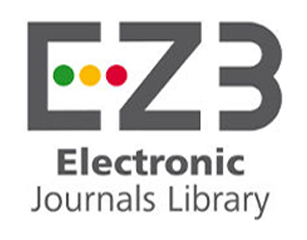FEATURES OF STATE REGULATION OF INVESTMENTS IN HUMAN CAPITAL
DOI:
https://doi.org/10.32689/2617-2224-2020-3(23)-278-287Keywords:
government regulation, human capital, investment, education, health, culturenAbstract
The article examines the features of state regulation of investment in human capital. It is determined that the main task of the state policy in the field of investment in human capital should be to provide every person with opportunities for the development of creative forces, the fullest possible implementation of productive abilities, which will allow achieving high quality economic growth. It is found out that state regulation in the sphere of investment in human capital has an increasingly growing economic basis. Among the economic measures of state regulation of the processes of reproduction of human capital, first of all, direct budget financing of investment in human capital should be singled out. By reducing or increasing public investment, the government curbs or encourages the accumulation of aggregate human capital in the public interest. Moreover, the state finances not only state structures of education, health, culture, but also institutions of the non-state sector from its own sources when implementing state standards. Among the mechanisms of the state’s economic regulation of investment in human capital, the following can be singled out: providing students with work during the holidays, paying scholarships, bypassing educational institutions, and so on. Therefore, one of the promising directions of state policy in the field of human capital reproduction should be to stimulate the development of cooperative relations between educational institutions and firms, the creation of joint research centers, enterprises focused on the development and implementation of scientific achievements. The state in regulating the development of the modern system of reproduction of human capital has to focus on the accumulation of knowledge, the development of abilities that enable a person, if necessary, for a relatively short period of time to change the sphere of activity without significant losses during the period of adaptation.
References
Захарова О. В. Управління інвесту- ванням у людський капітал: методо- логія, оцінка, планування: моногра- фія. Донецьк: ДВНЗ ДонНТУ, 2010. 378 с.
Климко С. Г. Людський капітал: сві- товий досвід і Україна : монографія / С. Г. Климко, В. М. Пригода, В. О. Сизоненко. Київ : Основа, 2016. 224 с.
Ларіна Я. С. Розвиток людського капіталу в умовах глобалізації / Я. С. Ларіна, О. С. Брацлавська. Київ : ВЦ “Академія”, 2012. 248 с.
Макарова О. В. Соціальна політи- ка в Україні: монографія. Ін-т де- мографії та соціальних досліджень ім. М. В. Птухи НАН України. Київ, 2015. 244 с.
Мельничук Д. П. Людський капітал: пріоритети модернізації суспільства у контексті поліпшення якості життя населення : монографія. Жито- мир: Полісся, 2015. 564 с.
Носик О. М. Людський капітал інноваційного розвитку: економічні основи відтворення : монографія. Харків : Вид-во НФаУ, 2016. 490 с.
Пічкурова З. В. Інвестиції в люд- ський капітал як визначальний чин- ник забезпечення конкурентоспроможності національної економіки // Формування ринкових відносин в Україні. 2014. № 6. С. 229–233.
Шутаєва О. О. Структура та основні підходи до оцінки людського капіталу // Культура народов Причерноморья. 2014. № 278, Т. 2. С. 31–34.
McLean G. Organization Development: Principles, Processes, Performance. San Francisko, CA: Berrett-Koehler Publishers. 2005. 466 p.











